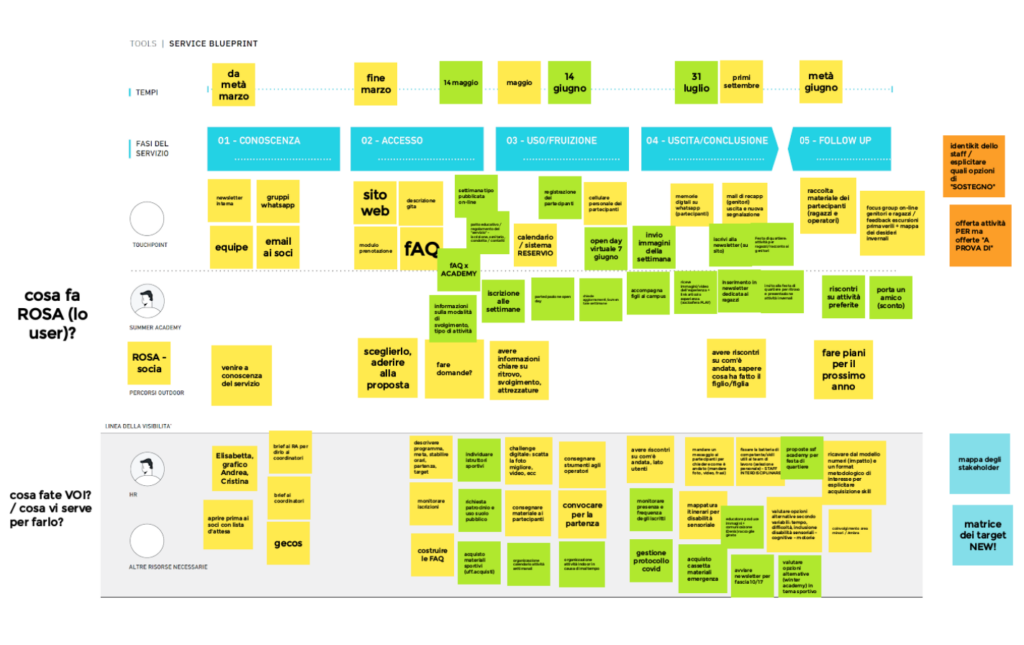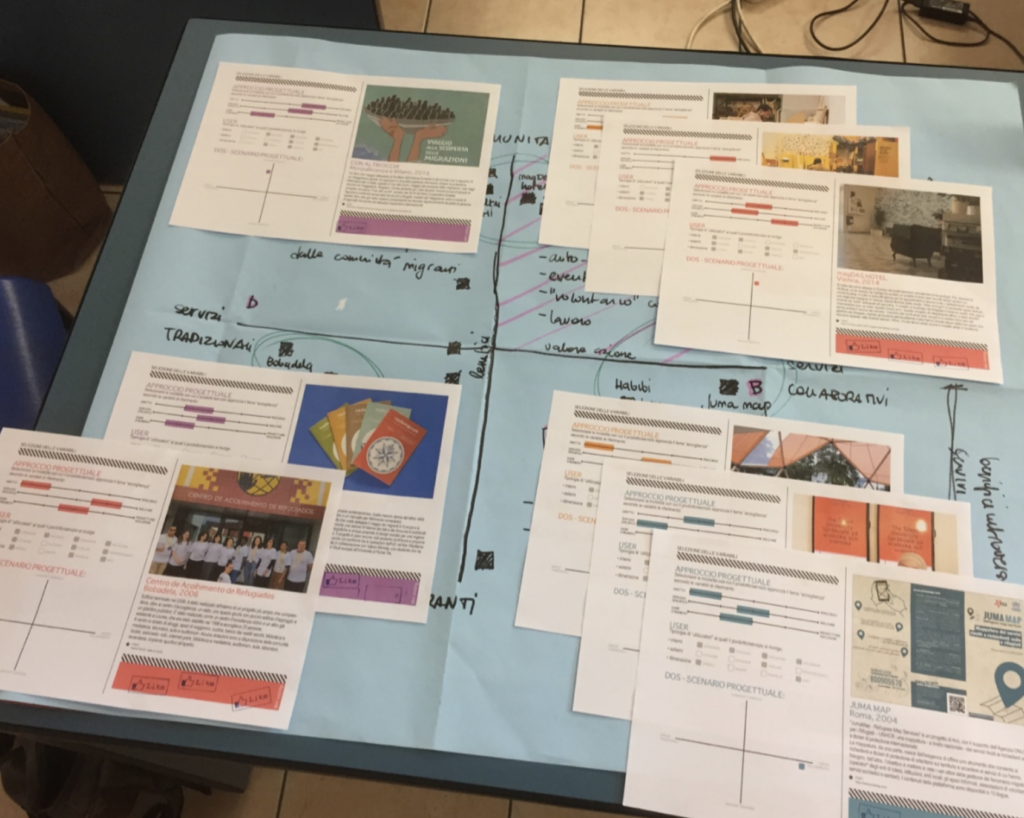Service design is a holistic approach to designing useful, usable, and desirable solutions that meet customer expectations and create value for end users. But what makes it so effective? And how can it be adapted to develop services of various kinds? Let’s explore this through some projects realized by Studio SHIFT.
Service design is a strategic process that focuses on the creation and optimization of services through an in-depth analysis of the existing touchpoints between the service and the user. This discipline is based on the idea that services are complex experiences involving people, processes, and technologies. Consequently, it involves designing these elements so they interact harmoniously, centering the design process on the needs, expectations, and behaviors of the public. Through a deep immersion into the users’ experiences, real needs are identified and mapped to find solutions that satisfy them effectively and engagingly.
Fundamental principles of Service design
What is Service design?
User Orientation: Service design places the customer (individuals or communities) at the center of the design process. Through thorough research and analysis of user needs, it seeks to understand their expectations, preferences, and frustrations. This approach ensures that the service is designed to solve real problems and improve their experience concretely.
Holistic Vision: Services consist of a series of interactions involving different actors and moments. Service design adopts a holistic view that considers all service stages, from initial touchpoints to closure and follow-up. This vision helps ensure consistency and quality in every aspect of the user experience.
Co-Creation: Service design encourages the active participation of all stakeholders, including customers, employees, and partners. Co-design allows for the collection of valuable feedback and ensures that solutions align with users’ real needs and expectations.
Detailed Planning: The service blueprint is a visual tool that graphically represents the service, mapping processes, touchpoints, and interactions between customers and service providers. Blueprints help identify improvement areas or create new services, optimize workflows, and ensure every aspect of the service is well-coordinated.
Prototyping and Testing: Prototyping is a crucial aspect of service design. Creating prototypes and testing solutions with end users allows for collecting feedback and making improvements before final implementation. This iterative approach reduces risks and increases the chances of service success.
Benefits of Service design
The benefits brought by service design are numerous and tangible:
- Improved User Experience: Services designed with user attention offer a smoother, more pleasant, and satisfying experience, increasing customer loyalty.
- Greater innovation: Service design promotes the ideation of creative, distinctive, and consistent solutions with the corporate identity, allowing companies to stand out from the competition and capture new market opportunities.
- Higher profitability: A well-designed service is more efficient to deliver and requires fewer resources to manage, leading to cost reduction and increased profits for adopters.
- Greater agility and adaptability: The prototyping logic that service design proposes enables companies to be more agile and adaptable to changing market needs, including integrating new technologies.

Examples of Service Design Applied by Studio SHIFT
Studio SHIFT specializes in applying service design to a wide range of projects for third-sector organizations and in diverse contexts. Here are some examples:
- Sociosfera Academy: We collaborated with Cooperativa Sociosfera to develop Sociosfera Academy, a new service dedicated to teenagers that offers outdoor sports experiences with educational and social goals. Through a structured and engaging design thinking process, we identified the needs, aspirations, and desires of the youngsters, creating a socialization and personal growth experience that has been very successful.
- Cooperativa Ruah: We designed and conducted a service design training course for the educational staff of the Cooperative, which operates in the migrant and refugee reception sector. The course taught participants how to use service design techniques and tools to create better services for their users, focusing on their needs, cultural aspects, and vulnerabilities. Participants gained valuable skills to design more effective, empathetic, and inclusive reception, orientation, and training services, facilitating migrants’ integration into society.
- Hack4TIRANO: We designed and facilitated a mentorship program that fostered the meeting between young talents and companies in the Tirano area. Through a co-design and creative brainstorming process, we helped young people develop innovative entrepreneurial ideas and create connections with potential employers. The program generated a surge of ideas and new business opportunities for the region.

For a new User Experience
Investing in service design means adopting a forward-looking vision that sees innovation not as a goal but as a continuous process of improvement and adaptation. It also means recognizing that every interaction with the user (touchpoint) is an opportunity to create value and develop lasting relationships.
For organizations that wish to remain competitive and relevant, service design is an invaluable resource. It is not just about improving existing services but completely rethinking how they are conceived and offered to users. With our experience and passion for change, we can help you develop services that not only meet expectations but exceed them, creating valuable experiences for all involved.
Explore our services and discover how Studio SHIFT can help transform your project!
